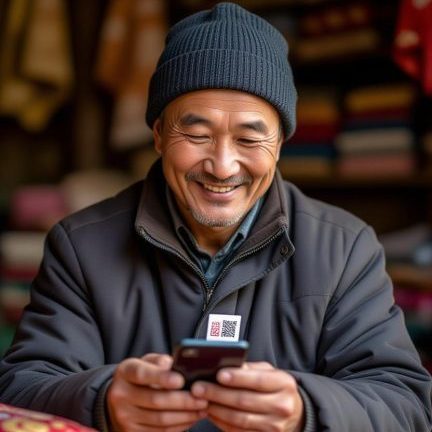Chinese Merchants Can Now Accept Indian Payments: A New Era of FinTech Collaboration

A quiet revolution unfolds in the world of trade between two Asian giants. Chinese exporters and e-commerce sellers now find it simpler to collect rupees from eager Indian buyers. Platforms like TataPayment.net lead this shift, bridging old divides with fresh digital tools. Imagine silk scarves from Suzhou landing in Mumbai homes, paid for in seconds via a phone tap. This ease sparks joy in markets long tangled by borders.
Recent partnerships have unlocked these doors wide open. In July 2025, PayPal joined forces with India’s NPCI and China’s Tenpay to blend wallets across lines. Travelers in Shanghai can scan Weixin Pay codes with PayPal, while Indian shoppers fund U.S. carts through UPI. Such links weave a web where money flows like monsoon rains. Yet, the real magic blooms in direct India-China ties. Platforms now let Chinese merchants tap into India’s booming 500 million UPI users. Picture a Delhi artisan buying jade beads from Guangzhou—no more weeks of wire waits. These steps herald a dawn where trade hums with harmony.
Still, shadows of rules linger like morning mist. Regulators guard borders fiercely. India’s RBI demands strict KYC checks and caps on inflows, fearing money laundering’s sly grasp. China echoes this with SAFE approvals, where exporters file papers within days of each receipt. Geopolitical whispers add weight; India once shied from yuan settlements amid tensions. Fees bite too—up to 3% on some UPI tries abroad—and data privacy laws clash like thunder. “We juggle compliance like a circus act,” sighs Li Wei, a Shenzhen exporter. Yet, hope glimmers. New MoUs, like India’s with Mauritius, hint at smoother local-currency paths. These hurdles, though steep, spur smarter paths forward.
Key Regulatory Challenges in the Spotlight
- Foreign Exchange Controls: Both nations limit outflows to curb volatility. Chinese firms face quotas; Indians hit daily INR caps.
- AML Scrutiny: Every transfer invites audits, slowing the dance of dollars and rupees.
- Licensing Mazes: Foreign players need nods from PBOC or RBI, a quest that tests patience.
Technology steps in as the gentle guide. Blockchain whispers promises of secure, swift ledgers. By 2025, over 70 nations link real-time systems, slashing days to minutes. APIs hum, connecting UPI to WeChat like old friends reuniting. AI watches for fraud, a silent sentinel. Trends point to tokenized assets too, where stablecoins steady wild currency swings. “Innovation turns barriers into bridges,” notes fintech expert Priya Singh. Cross-border flows, eyed at $290 trillion by 2030, ride these waves. From QR scans in Beijing bazaars to app taps in Bangalore, tech paints a canvas of connection.
READ ALSO: The Growing Popularity of Small Loans in Korea, A Financial Trend Worth Watching
Trends Shaping Tomorrow’s Trade
- Real-Time Rails: UPI eyes Southeast links, mirroring PayNow’s reach.
- Embedded Finance: Wallets hide complexities, letting merchants focus on craft.
- Sustainable Flows: Green bonds fund eco-trades, aligning profit with planet.
Voices from the front lines add color to this tale. Raj Patel, a Mumbai importer, beams: “Receiving payments from my Guangzhou supplier used to feel like chasing monsoon clouds. Now, with seamless integrations, it’s a steady stream.” Across the border, Mei Ling of Alibaba shares, “Indian buyers love our silks. Easy payments mean more orders bloom.” These stories remind us: behind code and cash, people dream and deal. As platforms evolve, they nurture trust, like roots in fertile soil. Fintech’s soft glow invites collaboration, turning rivals into partners in prosperity.
This era whispers of deeper bonds. With bilateral trade hitting new peaks—China as India’s top partner—these tools fuel fires of growth. Yet, true poetry lies in shared futures. As the indian payment system (印度支付系统) meshes with Alipay’s vast net, merchants dream bigger. Hurdles fade; horizons widen. In this dance of digits and desires, Asia’s giants step closer, hand in digital hand. What wonders await? Only time, and perhaps another tap, will tell.
